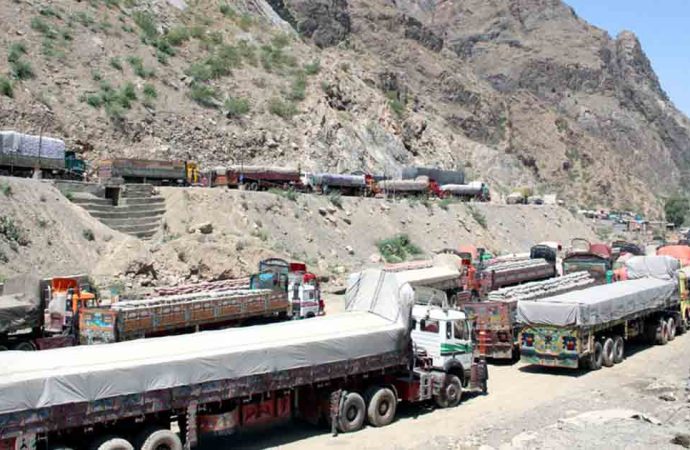Introduction Afghanistan, long perceived through the lens of conflict, is now increasingly being recognized for its geostrategic importance in regional trade and connectivity. At the heart of this transformation are Afghan transit corridors—vital land routes that connect South Asia to Central Asia and beyond. These corridors hold immense potential to strengthen regional economic ties, foster
Introduction
Afghanistan, long perceived through the lens of conflict, is now increasingly being recognized for its geostrategic importance in regional trade and connectivity. At the heart of this transformation are Afghan transit corridors—vital land routes that connect South Asia to Central Asia and beyond. These corridors hold immense potential to strengthen regional economic ties, foster mutual interdependence, and unlock opportunities for trade, investment, and development across borders.
The Geographic Advantage of Afghanistan
Afghanistan lies at the intersection of South Asia, Central Asia, and the Middle East—a position that makes it a natural transit hub. It shares borders with six countries: Pakistan, Iran, Turkmenistan, Uzbekistan, Tajikistan, and China. This positioning offers immense potential for cross-border trade, especially as regional economies seek access to new markets, raw materials, and ports.
For landlocked Central Asian Republics (CARs), transit through Afghanistan opens the shortest path to Pakistan’s Arabian Sea ports (Karachi and Gwadar). For Pakistan and India, access to Central Asia via Afghanistan presents lucrative trade possibilities and energy corridors.
Key Afghan Transit Corridors
Several transit corridors pass through Afghanistan, each offering unique trade opportunities:
- Pakistan-Afghanistan-Central Asia Corridor: This traditional route connects Karachi and Gwadar ports through Torkham and Chaman into Afghanistan, and onward to Uzbekistan and Turkmenistan. It is one of the most frequently used routes for Afghan transit trade.
- Lapis Lazuli Corridor: Connecting Afghanistan with Turkey and Europe via Turkmenistan, Azerbaijan, and Georgia, the Lapis Lazuli route is a western alternative that enhances Afghanistan’s trade diversification strategy.
- Chabahar Corridor: The Chabahar Port in Iran, developed with Indian support, gives Afghanistan an alternate trade route independent of Pakistan. It promotes India-Afghanistan trade while also serving regional transit goals.
- China-Afghanistan Corridor via Wakhan: Though limited in scale currently, the Wakhan Corridor offers a future route linking China’s Xinjiang province to Afghan markets and beyond.
The Role of Pakistan in Transit Facilitation
Among all neighboring countries, Pakistan has the most developed trade and transit infrastructure with Afghanistan. The Afghanistan-Pakistan Transit Trade Agreement (APTTA) has been a critical framework that allows Afghan goods to pass through Pakistan for export and import purposes. Similarly, Pakistan seeks reciprocal access to Central Asia through Afghanistan.
Pakistan’s ports, road networks, customs infrastructure, and logistics services (e.g., through National Logistics Corporation – NLC) play a central role in managing this cross-border trade. Torkham and Chaman border points serve as major gateways for Afghan goods, while Pakistan’s inclusion in the TIR Convention has helped streamline customs processes and reduce cargo delays.
Economic Potential and Regional Integration
The expansion of Afghan transit corridors is more than a logistical matter—it is a driver of regional economic integration. Here’s how:
- Boosting Trade Volumes: Transit routes lower transportation costs and reduce time, making trade more competitive. Regional countries can tap into $90+ billion worth of trade potential in Central and South Asia.
- Job Creation and Investment: Infrastructure development along transit corridors spurs investment in roads, logistics parks, and border terminals, generating employment and business activity.
- Energy and Connectivity Projects: Major energy projects like TAPI (Turkmenistan–Afghanistan–Pakistan–India) and CASA-1000 (Central Asia-South Asia electricity transmission) depend on secure and efficient transit across Afghan territory.
- Customs Revenue for Afghanistan: As a transit country, Afghanistan can earn significant revenue from customs duties and transit fees, helping to stabilize its economy.
Challenges to Corridor Utilization
Despite their potential, Afghan transit corridors face numerous challenges:
- Security Risks: Insurgent attacks, border tensions, and political instability often disrupt trade routes and deter investment.
- Infrastructure Gaps: Many road links, especially secondary and rural roads, are in poor condition. Rail links are minimal, and cold chain facilities are lacking.
- Bureaucratic and Customs Hurdles: Red tape, delays at border crossings, and inconsistent regulations hinder smooth cargo flow across borders.
- Lack of Multilateral Agreements: While bilateral agreements exist, a comprehensive regional transit framework involving all stakeholders is still missing.
Steps Toward Strengthening Regional Ties
To unlock the full potential of Afghan transit corridors and promote regional cooperation, several strategic actions are needed:
1. Enhance Infrastructure & Logistics
Investing in road and rail networks, border facilities, and integrated logistics systems will significantly improve trade efficiency.
2. Ensure Corridor Security
Regional cooperation on counter-terrorism and border management is vital to securing transit routes and attracting foreign investment.
3. Promote Digital Customs and TIR Systems
Adopting digital solutions, cargo tracking systems, and expanding the TIR Convention will reduce smuggling and streamline cross-border movements.
4. Foster Regional Diplomacy
Multilateral platforms such as SCO (Shanghai Cooperation Organization) and CAREC (Central Asia Regional Economic Cooperation) should be used to align transit strategies and resolve political disputes.
5. Support Public-Private Partnerships (PPPs)
Encouraging private investment in transit infrastructure, logistics, and services will reduce the financial burden on governments and accelerate progress.
Conclusion
Afghan transit corridors are more than trade routes—they are gateways to regional peace, prosperity, and partnership. By transforming Afghanistan into a transit bridge rather than a barrier, the region can harness trade as a tool for economic growth and political stability.
Strengthening these corridors will require collaboration, investment, and trust among neighboring countries. But the reward is a more connected, prosperous region—where economic interdependence becomes a foundation for lasting peace.
















